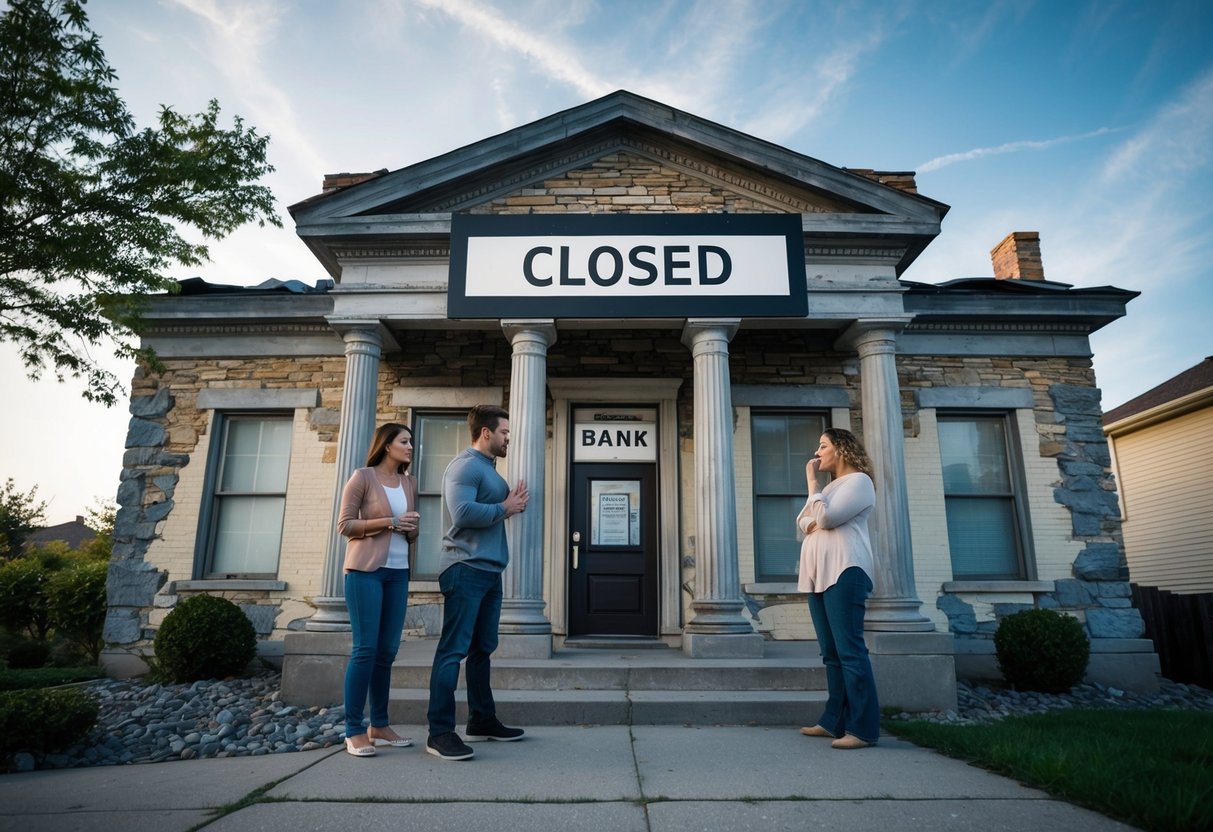Buying a home is an exciting milestone, but the process can be daunting, especially when it comes to understanding house deposits. Whether you’re a first-home buyer or looking to upgrade, knowing how much you need for a deposit is critical. In 2024, you typically need a minimum deposit of 5% of the property’s value. This means for a $600,000 house, your deposit could be as low as $30,000.
Home loan options vary widely, with some lenders offering loans with low deposit requirements, while others may ask for a larger deposit. A bigger deposit could mean lower monthly repayments and less interest over the life of your loan. It’s essential to consider how much you can save before starting the home-buying process.
Understanding terms like loan-to-value ratio (LVR) and knowing your financial options can make a big difference. For example, an LVR of 95% means you borrow 95% of the property’s value and pay a 5% deposit. The lower your LVR, the less interest and mortgage insurance you may pay, making home ownership more affordable in the long run.
Key Takeaways
- You need a minimum deposit of 5% of the property’s value.
- A bigger deposit can result in lower interest and repayments.
- Lower LVR means less interest and mortgage insurance.
Understanding House Deposits
When buying a home, the house deposit plays a crucial role in securing your property. It impacts your budget, loan-to-value ratio, and overall financial planning.
Deposit Fundamentals
A house deposit is the initial sum you pay towards the purchase price of a property. It is usually expressed as a percentage of the total property value. For example, a 20% deposit on a $500,000 home is $100,000. Making a larger deposit often means better loan terms and lower interest rates.
A higher initial deposit shows lenders you are a serious buyer and reduces their risk. This can improve your chances of loan approval and potentially lower your monthly repayments. First home buyers in Australia might find it challenging to save such large amounts, but there are various options and assistance available.
Determining Deposit Size
Determining the size of your deposit is essential for effective financial planning. Most lenders require a minimum deposit of 5% of the property’s purchase price. For a $600,000 home, this would mean a deposit of $30,000.
A deposit less than 20% of the purchase price often requires you to pay Lenders Mortgage Insurance (LMI). LMI protects the lender if you default on your loan. To avoid LMI, aim to save at least 20% of the property’s value. This not only helps you save on insurance costs but also gives you a stronger equity position in your home.
Deposit Sources and Assistance
There are several ways to gather the required deposit. Your savings are the most straightforward source. Consistently setting aside a portion of your income helps build your deposit over time. Budgeting and cutting unnecessary expenses can accelerate your savings.
Gifted deposits from family members can also be used. If this is the case, lenders will generally require a gift letter to confirm that the money is a gift and not a loan.
Another option is a deposit bond, which allows you to provide a guarantee instead of a cash deposit at the time of sale. This can be helpful if your funds are tied up until settlement.
Utilising these strategies can assist in amassing the necessary deposit, making your journey to home ownership smoother.
Home Loan Options for First Home Buyers
For first home buyers in Australia, understanding the different home loan options available can help you make an informed decision. This section looks at how home loans work, compares different loan types, and explains available government schemes.
Understanding Home Loans
A home loan, also known as a mortgage, is a loan taken out to buy property. The loan amount depends on the property’s value and your deposit. Typically, you need a deposit of around 20% of the property’s value to avoid Lenders Mortgage Insurance (LMI).
Interest rates on home loans can be either fixed or variable. Fixed rates remain the same for a set period, while variable rates can change. You typically repay the loan over a term of 25 to 30 years through regular payments.
Comparing Loan Types
Home loans come in various forms:
Fixed-Rate Loans: These loans have a fixed interest rate for a specified period, usually 1 to 5 years. This means your repayments won’t change during this period, providing stability.
Variable-Rate Loans: Interest rates on these loans can fluctuate based on market conditions. While they offer flexibility, your repayments can increase or decrease over time.
Offset Accounts: Some variable-rate loans offer an offset account, where the money in your account is offset against your loan balance, reducing the interest payable.
Different lenders also offer specific loans for first home buyers, often with lower interest rates or special terms.
Navigating Government Schemes
Several government schemes are designed to help first home buyers:
First Home Loan Deposit Scheme (FHLDS): This scheme allows eligible buyers to purchase a home with as little as 5% deposit without paying LMI. The government guarantees up to 15% of the loan amount, which can save you thousands.
First Home Super Saver Scheme (FHSSS): This scheme lets you save money for your first home inside your superannuation fund, potentially benefiting from lower tax rates.
New Home Guarantee: A subset of the FHLDS, this is aimed at those building or buying a new home, offering the same reduced deposit requirement.
These schemes can significantly reduce the upfront costs and make entry into the property market more accessible for first home buyers.
Insurance and Other Financial Considerations

When applying for a house deposit loan, it’s not just the deposit you need to think about. Insurance and other financial aspects such as Lenders Mortgage Insurance (LMI), loan protection insurance, and budgeting for additional costs like stamp duty and transaction fees are crucial.
Lenders Mortgage Insurance
Lenders Mortgage Insurance (LMI) is typically required if your deposit is less than 20% of the property’s value. LMI protects the lender in case you default on your loan. The cost of LMI can vary based on the loan amount and the size of your deposit. For instance, if you buy a $600,000 home with a 5% deposit, your LMI might be added to the loan balance, increasing your monthly repayments.
Some lenders offer an LMI waiver under specific conditions, such as meeting certain income thresholds or working in particular professions. Always check with potential lenders if any of these conditions apply to you, as it could save you a significant amount of money.
Loan Protection Insurance
Loan protection insurance safeguards you against unforeseen circumstances that might affect your ability to repay your home loan. This insurance can cover events like serious illness, injury, or loss of income. Though not mandatory, having loan protection insurance offers peace of mind. It ensures that your loan repayments are covered in scenarios that impact your financial stability.
The cost of loan protection insurance varies, depending on factors such as your age, occupation, and health. It’s important to compare policies from different providers to find the best coverage that suits your needs. Remember, this insurance is an additional expense on top of your regular loan repayments.
Budgeting for Additional Costs
Buying a property involves more than just the deposit and loan repayments. Stamp duty, conveyancing fees, and other upfront costs can add up quickly. Use a stamp duty calculator to estimate this tax, which varies depending on the property’s value and location. For example, stamp duty on a $600,000 property in New South Wales could be around $23,000.
Conveyancing fees cover the legal aspects of transferring property ownership and can range from $800 to $2,500. Additional costs like building inspections, loan application fees, and moving expenses should also be factored into your budget to avoid financial strain. List all possible expenses early to ensure a smooth, stress-free buying process.
Property Value and Investment Considerations

When considering a house deposit loan, understanding property value is crucial. You also need to assess whether an investment property will be a viable and beneficial addition to your portfolio.
Evaluating Property Value
Before purchasing a property for investment, it’s important to evaluate its current market value. You should look at recent sales of similar properties in the same area to get an accurate idea. Real estate websites and local realtors can provide this data. Additionally, consider the condition of the property.
- Good condition properties often command higher prices.
- Look for properties in growth areas to ensure the value appreciates over time.
Also, the property’s age, design, and facilities affect its value. Older properties might require renovations, impacting your budget. Compare these factors before making a decision.
Assessing Investment Viability
To determine if an investment property is viable, calculate the potential rental income and compare it with the costs. Costs include mortgage repayments, property management fees, insurance, and maintenance.
- Rental Income: This should ideally cover your monthly expenses. Research local rental markets for accurate figures.
- Equity: The amount of deposit you put down can affect your loan terms and monthly payments. A 20% deposit is typical to avoid Lenders Mortgage Insurance (LMI).
Evaluate long-term benefits like property appreciation and tax deductions. Positive cashflow properties are preferred, where rental income exceeds expenses.
The Purchasing Process

Buying a home involves several key steps that ensure everything is legally and financially sound. Below, you’ll find crucial stages like making an offer, understanding the contract of sale, paying required taxes, and finalising the settlement.
Making an Offer
When you find a house you like, you need to make an offer. This offer should reflect what you are willing to pay for the property. It’s common to start with a lower bid and negotiate. Your offer must consider the current market value and any potential issues with the property.
Sometimes, a written offer includes special conditions, like needing finance approval or a building inspection. Make sure to communicate clearly with the real estate agent. They will present your offer to the vendor (seller). If the vendor accepts, you move on to the next step. If not, be prepared to negotiate or look for other properties.
Understanding the Contract of Sale
Once your offer is accepted, you need to sign the contract of sale. This document details the terms of the purchase, including the sale price, deposit amount, and settlement date. Both you and the vendor sign separate copies, which you then swap, ensuring both parties have signed contracts.
Review the contract carefully and consider having a solicitor or conveyancer examine it. Look for any clauses about the cooling-off period, conditions that must be met before settlement, and what happens if either party fails to meet their obligations. Being clear on these details helps prevent future disputes.
Paying Stamp Duty and Other Taxes
Stamp duty, now commonly referred to as land transfer duty, is a tax you pay on the purchase of your property. The amount depends on the sale price and the state or territory where the property is located. It’s a significant cost, so budget accordingly.
You might also be required to pay other taxes or fees, like mortgage registration fees. Be aware of any exemptions or concessions you might qualify for, such as first-home buyer concessions. Consult with your solicitor or conveyancer to ensure you understand and meet your obligations.
Finalising the Settlement
Settlement is the final stage of the home-buying process. This is when the property ownership officially transfers to you. Usually, the settlement date is set a few weeks after the contract is signed, giving time to finalise your mortgage and arrange other details.
On settlement day, your solicitor or conveyancer will handle the exchange of funds and ensure all documents are in order. You’ll pay the remaining balance of the purchase price, including any adjustments for rates or taxes. Once settled, you receive the keys, and the property is yours. Make sure all utilities and services are transferred to your name promptly to avoid disruptions.
Exploring Financing Options and Support
When looking to secure a house deposit loan, there are several options you can explore. From getting pre-approved for a loan to finding a guarantor and applying for available grants and concessions, these steps can make the process smoother and more accessible for you.
Getting Pre-Approval
Getting pre-approval from lenders is essential when you start your home buying journey. Pre-approval gives you an idea of how much you can borrow, which helps you narrow down your property search to homes within your budget.
To get pre-approval, you’ll need to provide financial documents such as your income statements, bank statements, and details about your current debts. Lenders will assess your financial situation and credit history. Pre-approval isn’t a guarantee of a loan, but it shows sellers that you are a serious buyer. This step can also speed up the final approval process once you find a property.
Finding a Guarantor
A guarantor can help you secure a home loan, especially if you don’t have a large deposit. A guarantor is usually a family member who agrees to use their property or savings as security for your loan.
This option can reduce or eliminate the need for Lenders Mortgage Insurance (LMI), which you might need to pay if your deposit is less than 20%. Your guarantor must understand the risks involved since they are responsible if you default on the loan. Having a guarantor can make buying a home more achievable, particularly for first-time buyers.
Applying for Grants and Concessions
There are various grants and concessions available to help you with your house deposit. The First Home Owner Grant is one such scheme, providing a one-off grant to eligible first-time home buyers. The Home Guarantee Scheme supports buying with a reduced deposit, sometimes as low as 5%, without paying LMI.
Additionally, you might be eligible for stamp duty concessions or exemptions, which can significantly lower your upfront costs. These schemes vary by state and territory, so it’s crucial to check the specific requirements and benefits available in your area. Taking advantage of these options can make homeownership more affordable.
Sale Methods and Completion
When buying a house, understanding the sale methods and how the completion process works can make the experience smoother. Key considerations include how homes are sold and the legal steps involved in transferring ownership.
Bidding at Auction
Bidding at auction is a popular method to buy property. You need to register with the auctioneer before participating. Auctions are competitive, and the highest bid wins if it meets the vendor’s reserve price. It’s crucial to set a budget and stick to it.
Before the auction, prepare your finances and have your solicitor review the contract. If successful, you must pay a deposit, often 10%, on the spot. There is no cooling-off period, so be sure about your decision before bidding.
Negotiating Private Sale
In a private sale, you negotiate directly with the vendor or through a real estate agent. Private sales provide more time for decisions compared to auctions. You can inspect the property, arrange for building inspections, and negotiate prices and terms.
After agreeing on a price, you sign a contract and pay a holding deposit. The contract is usually conditional on factors like finance approval or building inspection results. Once all conditions are met, the sale proceeds to the settlement stage, where the remaining balance is paid, and ownership is transferred.
Understanding the Transfer of Ownership
The transfer of ownership is the final step in buying a home. After signing the contract, your solicitor handles the conveyancing process. This includes checking the property’s title, arranging payment of duties, and preparing settlement documents. Conveyancing fees vary but cover essential services.
On settlement day, the remaining balance is paid, usually from home loan funds, and the property’s title is transferred to you. The keys are handed over, and you become the legal owner. It’s crucial to ensure all paperwork is in order to avoid delays.
This process, while straightforward in many ways, benefits greatly from professional assistance. A knowledgeable solicitor or conveyancer can guide you through each step, ensuring a smooth transition.
Preparing for the Unexpected

When securing a house deposit loan, it is crucial to prepare for unforeseen situations that might impact your financial stability. This involves creating a solid contingency plan and being ready to tackle any financial challenges that come your way.
Contingency Planning
A contingency plan acts as a safety net in case of emergencies. To start, calculate at least three to six months’ worth of living expenses.
Essentials to consider:
- Housing costs: Rent or mortgage, utilities
- Food and groceries: Daily and weekly needs
- Transportation: Fuel, public transport, car maintenance
- Healthcare: Insurance premiums, medical expenses
Open a separate savings account exclusively for emergencies. This ensures that your emergency fund isn’t mixed with your daily expenses. Regularly contribute to this fund, even if it’s a small amount each month.
If unexpected expenses arise, you won’t have to rely on credit cards or personal loans, which can add to your debt. Instead, your emergency fund will provide the necessary financial support.
Handling Financial Challenges
Financial stability isn’t guaranteed, even with a house deposit loan. It’s vital to prepare for potential challenges.
Steps to manage financial challenges:
- Track your spending: Regularly monitor your income and expenses to spot areas where you can cut back.
- Create a budget: A well-planned budget can help you allocate funds to necessary areas and avoid unnecessary spending.
- Increase income: Consider taking on additional work or freelance jobs to boost your earnings.
- Debt management: Pay down high-interest debts first to reduce long-term financial strain.
In case of a job loss or significant financial setback, reach out to your lender. Most lenders can offer temporary relief options, such as payment deferrals or interest-only periods, to help you manage the situation.
By staying proactive, you can mitigate the impact of financial difficulties and maintain your path toward homeownership.
Final Steps Before Assuming Ownership
Before you can officially take possession of your new home, there are several key tasks to complete. These include finalising payments and coordinating with your financial institutions during the settlement process.
Completing the Payment
After signing the contract and paying the deposit, you need to arrange the rest of the home payment.
Often, a trust account is used to hold these funds securely until transfer. Payment methods can include bank transfers or using a term deposit that matures at the right time.
Mortgage registration fees must also be paid. These fees are necessary for registering your loan with the relevant authorities. Ensure that all payments are made on time to avoid delays.
The Role of Financial Institutions in Settlement
Financial institutions play a crucial part in the settlement process. After your home loan application is approved, the bank will assist you in moving funds for the final payment.
They also verify the contract terms and release the payment to the seller’s bank. During settlement, the bank ensures all documents are correctly signed and lodged.
Your bank will also manage any required transfers, like moving your loan amount into the trust account. Coordination with financial institutions is vital to ensure a smooth transition into home ownership.
Frequently Asked Questions

Understanding house deposit loans can be challenging. Below you’ll find answers to common questions related to house deposits in Australia.
What minimum deposit is required for purchasing a property in Australia?
The minimum deposit usually needed is 20% of the property’s value. This amount helps you avoid Lenders Mortgage Insurance (LMI). Some lenders might accept a deposit as low as 10%, but this can come with additional requirements and costs.
How does the First Home Loan Deposit Scheme work?
The First Home Loan Deposit Scheme allows eligible first-time buyers to purchase a home with a deposit as low as 5%. The government guarantees part of the loan, reducing the need for LMI. This can help you enter the market sooner.
Can one borrow additional funds for a property deposit in New South Wales?
Yes, it’s possible to get a personal loan to top up your house deposit. This is especially useful if you need to reach the 20% threshold to avoid LMI. It’s important to consider the extra debt and interest you’ll be taking on.
What are the typical interest rates for a house deposit loan in Queensland?
Interest rates for house deposit loans can vary. They generally range from 6% to 15%, depending on the lender and your credit history. It’s advisable to shop around and compare different loans to find the best rate for your situation.
Is a $20,000 deposit sufficient to secure a mortgage for a home?
A $20,000 deposit might be enough for some properties, especially if they are lower in value. However, a 20% deposit is often recommended to avoid extra costs like LMI. Check with lenders to understand their specific requirements and terms.
What is a house deposit loan calculator and how can it assist buyers?
A house deposit loan calculator helps you estimate how much you need to save. It allows you to input your property’s value, the deposit percentage, and other financial details. This tool provides a clearer picture of your financial needs and helps in planning your savings more effectively.








